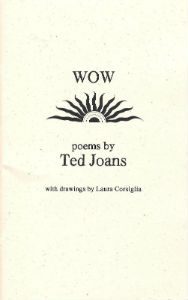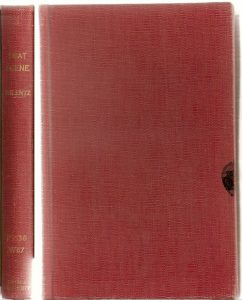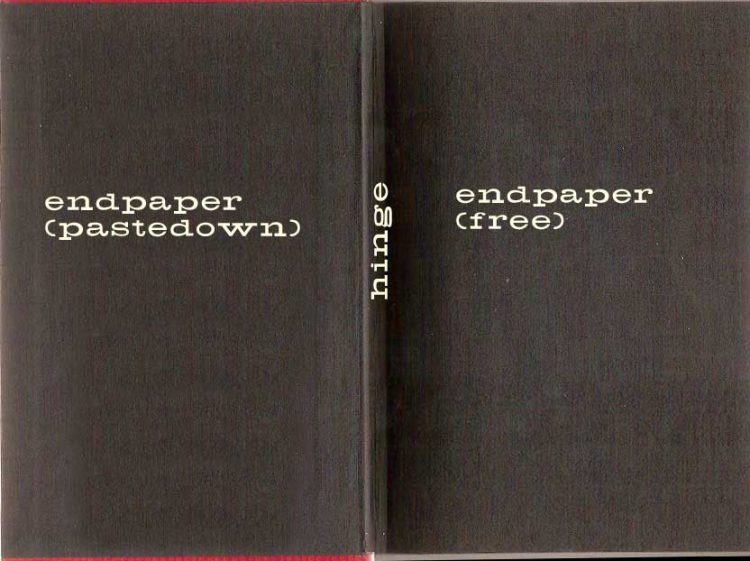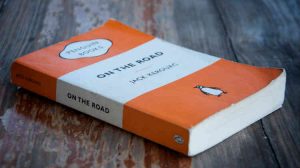
If you collect books, you’ve probably encountered several types of bindings. Here’s a description of the various types and some things that affect their condition.
Primary Types of Book Bindings
Broadly, there are two kinds of bindings: hardcover, and softcover. The books you’re most likely to find in your local bookstore tend to fall into three variations of these.
Hardcover

The cover of a hardcover book is inflexible, thus the name. The actual covers are sometimes referred to as “boards,” which may be covered in paper, cloth, or occasionally leather. The cover sometimes bears the book’s title and author. The title, author & publisher are printed on the spine.
Hard cover books are also sometimes referred to as hardback, or hardbound.
Usually a hardcover book is found in a dustjacket, which wraps around the book, providing protection as well as a place to provide a description of the book, brief author bio, bar code, price, etc.
Mass market paperback

This is the format in which most popular fiction is published. These books usually measure about 4.25″ x 7″ inches.
The Grisham, Grafton, or Cornwell novel you bought at the supermarket checkstand to read on your vacation is one of these.
In the past these were sometimes referred to “pocket books” (which is actually the name of a publisher).
Trade paperback

Trade paperbacks are larger in size than mass-market paperbacks, and are usually printed on better quality paper.
They’re often about 6×8 inches or so, though size varies. Literary fiction and nonfiction are most often published in this format.
The last poetry or nonfiction paperback book you purchased is almost certainly a trade paperback.
Wraps
When perusing booksellers’ catalogues (or online book listings), you might notice the term “wrappers” or “wraps,” which refers, broadly, to any paper binding. (The terms soft cover, paperback, and wraps also refer to a paper binding.)
Other types of book bindings
Chapbook

The book has been stapled into its covers. Chapbooks are most often made by folding sheets of 8.5×11 paper in half, and stapling them into a cardstock cover.
Many small-press poetry books are in chapbook form; they’re a time-honored publication method for established & beginning poets alike.
Library binding

Lending libraries sometimes re-bind books into a heavier, more durable binding. which will stand up the heavy use to which library books are often subjected.
The author, title & call number is often printed or embossed onto the spine & sometimes the cover. And, as is the case with other library books, the customary markings, stamps & pockets are added as well.
Buckram is a heavily woven fabric of cotton or linen, often used to bind library books (& some other books). To stiffen & protect it, a special glue or other substance is applied to the fabric.
Collectors usually avoid library-bindings, since the book has altered from its original state.
Dustjacket:
The paper that wraps around the covers of a hardcover book; occasionally you’ll find a softcover book with a dustjacket as well. It’s often abbreviated in booksellers’ catalogues and online listings as a “dj.”
Sometimes referred to as a “dustwrapper”, it is not to be confused with “wrappers” which means the covers of a softcover book.
Dustjackets first appeared late in the 19th century but were not commonly used until early in the 20th century. They were often discarded by the purchaser making early dustjackets difficult to find now.
For book collectors, the presence of a dustjacket – and its condition – is very important & has a substantial bearing on the value of a book.
Common Binding Problems
Hinges:

The hinge is the interior or exterior point on a book where the cover meets the spine. Inside, it’s where the flyleaf (front free endpaper) meets the pastedown (the endpaper which is pasted to the inside cover of the book).
The hinges are a book’s weakest point so prone to problems, especially if the book is handled or shelved carelessly. Loose or broken hinges are very common on old books.
“Hinges starting” could mean one of two things:
- The book’s hinges are beginning to separate from each other via a tear. (the flyleaf separating from the pastedown). If not just “starting” the hinges are described as “broken.”
- The book’s hinges are beginning to loosen. The endpapers have come partially unglued from the covers at the hinge. Sometimes this is described as “shaken hinges.” Loose hinges can lead to broken hinges.
If the book is of some worth the value will probably be enhanced by repair, provided it’s well done. (Poorly done repairs can reduce the value.) It may or may not be worth making such a repair on a common book. Any repairs must be disclosed in the event you decide to sell the book.
Hinges can be repaired fairly easily at home (usually with archival glue or tape), but if the book is valuable it’s best to have a professional do it. If you’re tempted to do it yourself, Google “book hinge repair” or see:
Broken Book Hinge Repair
Loose Book Hinge Repair instructions.
To prevent loose hinges, pay careful attention to how you handle and shelve your books. Never pick a book up by one cover, or bend the covers back too far. Always shelve books vertically (not on their sides, or spine-up), so that they are neither packed too tight on the shelf nor leaning. Books should be shelved with other books of similar size; a large book surrounded by small books doesn’t have the proper support & may develop loose hinges.




